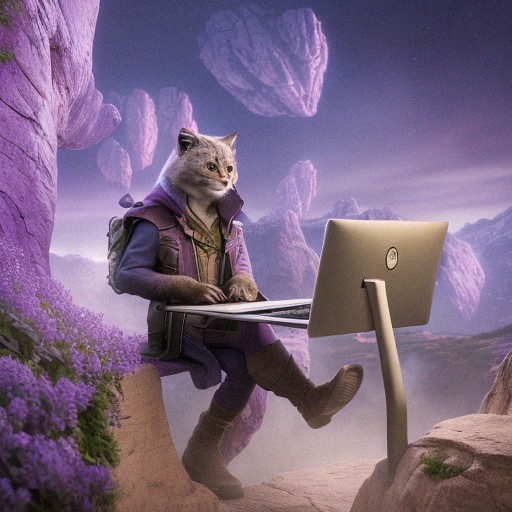Creativity is a fundamental aspect of human behavior that enables us to think beyond the boundaries of conventional wisdom and produce new and innovative ideas. It is the fuel that drives progress and innovation in every field, from the arts to science and technology. In the field of user experience (UX) design, creativity plays a critical role in the development of user-centered designs that meet the needs of users and provide them with a satisfying and enjoyable experience. In this article, we’ll explore the four types of creativity identified by Arne Dietrich (2004) and how UX designers can be creative in the UX design process.
Deliberate and Cognitive Creativity
Deliberate and cognitive creativity is the type of creativity that results from a deliberate, analytical, and cognitive process of thought. It is the kind of creativity that requires a great deal of effort, planning, and analysis to produce new ideas. UX designers can be creative in this type of creativity by using various tools and techniques such as brainstorming, mind mapping, and user research. These tools and techniques help UX designers to identify the needs and requirements of users, analyze the market and competition, and develop new ideas and concepts for their designs.
It’s important to note that deliberate and cognitive creativity requires a deep understanding of the subject matter and the ability to analyze and manipulate information in new ways. This type of creativity can be enhanced through continued learning and the development of critical thinking skills. Tools such as brainstorming, mind mapping, and research can aid in the process of deliberate and cognitive creativity by providing structure and guiding the creator in exploring new ideas.
Deliberate and Emotional Creativity
Deliberate and emotional creativity is the type of creativity that is driven by emotions and feelings. It is the kind of creativity that is inspired by the personal experiences, values, and beliefs of the designer. This type of creativity is often seen in works of art, music, and writing, where the creator intentionally uses their emotions to create a piece that evokes a powerful emotional response from the audience.
Deliberate and emotional creativity requires a combination of technical skills and emotional intelligence. The creator must have a solid understanding of their craft, be it painting, music, or writing, and possess the ability to use their emotions to generate a piece that speaks to the audience and resonates with them deeply emotionally.
An example of deliberate and emotional creativity can be seen in the works of Vincent van Gogh, the famous Dutch post-Impressionist painter. Van Gogh’s use of vibrant colors and bold brushstrokes was a deliberate attempt to express the emotional intensity he felt while painting. His works are characterized by their emotional intensity and use of vivid colors, and they continue to captivate and inspire audiences to this day.
In the context of UX design, deliberate and emotional creativity can be applied in designing interfaces that are not only functional but also emotionally engaging. UX designers can use their knowledge of color theory, typography, and emotional design principles to create interfaces that not only meet the functional needs of the user but also elicit a positive emotional response.
Spontaneous and Cognitive Creativity
Spontaneous and cognitive creativity is the type of creativity that arises spontaneously from the subconscious mind without conscious effort or planning. It is the kind of creativity that is often unexpected and surprising and can lead to innovative and unconventional solutions.
Probably you were in a situation where you were stuck in a problem. You couldn’t find a proper solution for that. Still, when you disconnect yourself from the problem for a short time by doing something else or just walking in a new place, suddenly, a solution comes to your mind and motivates you to do something; this is an example of cognitive creativity.
UX designers can leverage this type of creativity by embracing serendipity and taking time to reflect on their designs. They can also encourage spontaneous creativity by embracing experimentation and taking risks, and considering the “out of the box” approach in their design process.
Spontaneous and Emotional Creativity
Spontaneous and emotional creativity is the type of creativity that is driven by intuition, instinct, and emotional impulses. It is the kind of creativity that can lead to the creation of designs that are unique, personal, and deeply meaningful.
Spontaneous and emotional creativity is what distinguishes great artists and musicians. These sudden, emotionally charged creative moments can be incredibly impactful, akin to a moment of insight or a spiritual encounter. Though no specific expertise is required for this type of creativity, possessing a talent such as writing or sketching is often necessary to bring these fleeting creative ideas to life.
UX designers can be creative in this type of creativity by tapping into their own emotions and instincts and using their personal experiences and perspectives to inform their designs.
Creativity enables designers to produce innovative and effective designs that meet the needs of users. By understanding the four types of creativity identified, UX designers can identify their strengths and weaknesses and develop strategies for harnessing their creativity in the UX design process. By combining deliberate and spontaneous creativity, and cognitive and emotional creativity, UX designers can create user-centered designs that are not only functional and effective but also emotionally engaging and meaningful.




